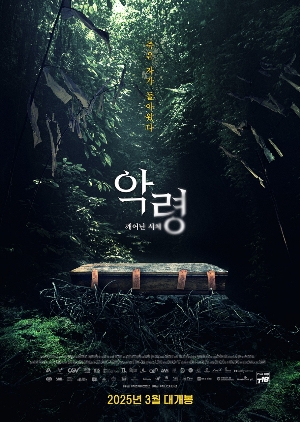
Introduction
"The Corpse" (2025) emerges as a standout in contemporary horror cinema, intertwining Vietnam's rich cultural tapestry with universal themes of love, loss, and the supernatural. This analysis delves into the film's narrative structure, its meticulous sound design, and the factors contributing to its commercial success, all through the discerning lens of a sound designer.
1. Plot Overview: Echoes of the Past
Set against the backdrop of rural Vietnam, "The Corpse" narrates the story of a couple who, upon unearthing an ancient tomb on their property, inadvertently releases a vengeful spirit linked to a cursed silver bracelet. This discovery sets off a harrowing chain of events, intertwining their lives with age-old legends and the spectral consequences of disturbing the dead. The film masterfully weaves traditional Vietnamese funeral customs into its narrative, offering audiences a profound exploration of cultural rites and the lingering presence of ancestral spirits.
2. Sound Design: Crafting an Auditory Nightmare
From a sound designer's perspective, "The Corpse" employs a sophisticated auditory palette to heighten tension and immerse viewers in its eerie atmosphere.
2-1. Ambient Soundscapes
The film utilizes ambient sounds to establish a sense of place and foreboding. Subtle elements like distant chimes, rustling leaves, and the omnipresent hum of cicadas create an immersive rural setting. These sounds not only ground the narrative in its locale but also serve to unsettle the audience, as familiar noises take on ominous undertones.
2-2. Dynamic Range and Silence
The strategic use of dynamic range plays a crucial role in the film's sound design. Moments of near silence, punctuated by sudden auditory jolts, manipulate viewers' anticipation and amplify scare factors. This technique aligns with contemporary horror sound design practices, where the interplay between quietude and abrupt noise elicits heightened emotional responses.
2-3. Cultural Musical Elements
Incorporating traditional Vietnamese instruments and melodies, the score enriches the narrative's cultural authenticity. Instruments such as the đàn bầu (monochord) and đàn tranh (zither) are woven into the soundtrack, their haunting tones enhancing the film's otherworldly ambiance. This fusion of cultural music with horror motifs creates a unique auditory experience that resonates with both local and international audiences.
3. Box Office Appeal: Resonating with Audiences
Several factors have propelled "The Corpse" to notable box office success:
3-1. Cultural Authenticity
By embedding genuine Vietnamese cultural elements into its storyline and production design, the film offers a fresh perspective within the horror genre. This authenticity appeals to audiences seeking diverse narratives and contributes to the film's global resonance.
3-2. Strategic Release Strategy
Achieving the largest day-and-date release for a Vietnamese film, "The Corpse" premiered simultaneously in multiple territories, including the US, Australia, South Korea, and Vietnam. This strategy maximized its reach and capitalized on global marketing efforts, boosting its commercial performance.
3-3. Positive Critical Reception
The film's ability to blend horror with cultural storytelling has garnered positive reviews, with critics highlighting its suspenseful narrative and effective sound design. Such acclaim has attracted a broader audience, curious to experience the film's unique approach to the genre.
Conclusion
"The Corpse" (2025) exemplifies how culturally rooted storytelling, combined with meticulous sound design, can elevate a horror film's impact and commercial viability. By immersing audiences in a world where traditional rituals intersect with supernatural terror, and by employing sound as a conduit for emotion and suspense, the film stands as a testament to the power of sensory storytelling in cinema.